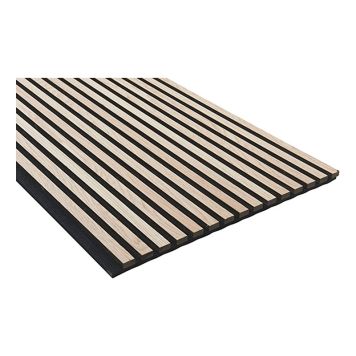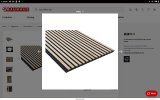IMO, the best bet for speaker wire is to buy some Belden 8473 cable. It's a twisted pair of 14 gauge stranded/tinned copper wires designed to be speaker cable by one of the biggest cable companies in the world - that has real cable engineers designing their cables. Lower power systems can often work just fine with Belden 9497 which is a twisted pair of 16 gauge stranded/tinned copper wires also designed to be speaker cable. Both are flexible and will last for an eternity - because they are engineered for this application. They are engineered for low capacitance/inductance, and the tinning provides corrosion resistance like it does with circuit boards. I prefer mechanically clamped and then carefully soldered connectors on each end, for a permanent non-deteriorating connection. It's an easy DIY project for a fraction of the cost of commercially pre-assembled speaker cable.
Be careful of any cable with bare untinned stranded copper conductors under a vinyl jacket/covering as very often the vinyl jacket/covering will leach corrosive plasticizers onto the bare untinned copper causing it to turn green with corrosion in only a few years - which you will see through the vinyl jacket/covering if it's clear. I can't imagine that a conductor consisting of a bunch of corroded strands will perform properly and not contribute to IMD. I have personally seen this green corrosion on copper wires many times. There are actually cable specifications for a non-contaminating plastic jacket/covering which are detailed in the datasheet of the particular cable...
That Belden cable looks like a good choice, but relatively expensive compared to plain old OFC copper speaker wire. I completely agree with mechanical (crimped) connectors and soldering is an extra step that will ensure they don't come off. Not sure what the trend with screw connectors is, but IMO it's a less secure connection and I can't envision it providing the same contact quality.
My recent experience with CCA speaker wire vs copper speaker wire only compares two: Amazon Basics 16/2 in wall white jacketed and Monoprice 12/2 in wall black jacketed 99.9 OFC copper.
The CCA was interesting because as an old timer I didn't even know there was a copper clad aluminum speaker wire. Guess I'm stuck in the 80's and assumed it was just copper. Anyway, before I even knew what CCA was, I could tell I didn't like the way the strands would shear off and land in my terminal cups, on my floor or worse, get lodged in my fingers while I was working with them.
Functionally the CCA 16/2 seemed to work fine in my application with under 25 foot runs, (60 wpc receiver and 8 ohm nominal speakers).
Then I found out about the whole CCA thing and decided to hunt down some budget copper wire and while I'm at it why not go big or go home. Well in all honesty, mainly wanted the much larger 12 gauge because it fits more appropriately in my speaker binding posts and I'm too cheap to buy decent crimp on connectors and can't bring myself to buy the screw on, or twist and crush style... From my industrial machinery building days I know terminations like that come loose and don't provide the same quality contact as a crimp on. Besides, terminating bare speaker wire eliminates a bunch of added variables.
The copper wire eliminated the problem I had with CCA wire strands breaking off or getting cut off when removing the jacket and tightening them in the binding posts. No little strands broke loose and best of all, none got lodged in my fingers.
The difference in the workability of the 16/2 CCA and 12/2 copper was like night and day though. The larger copper wire was way harder to work with and didn't relax after taking it off the spool. The outer jacket on the copper was way thicker and tougher. My arthritic knuckles still hurt just thinking about each end I worked on.
The sound of the two was something worth mentioning. I brought it up at another forum and got misdirected into a debate on speaker break in. Anyway, on my tower speakers which are rated to 31hz -3 db, when connected with the thinner 16/2 CCA measured down to 40 hz for crossover point by Audessey. When I switched to the larger 12/2 copper wire, (everything else stayed the same), Audessey measured them at 70 hz for crossover point. I ran Audessey several times with the same results. I thought the speakers sounded good either way, but it seemed like I hear a more dynamic and clear mid-bass to high region. Not sure what's happening there, or if it's my imagination. I did find some old research that discussed the affects of capacitance by different wire and that it can cause a reduction in highs, (possibly giving the illusion of more bass?).
The larger wire didn't seem to affect the center channel the same way however.
I'm going to start tinkering with the wiring some more and maybe try a different brand, style or size of copper to see if anything changes.




